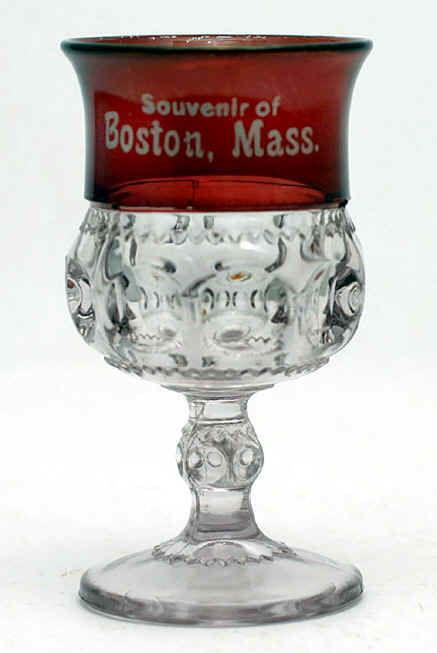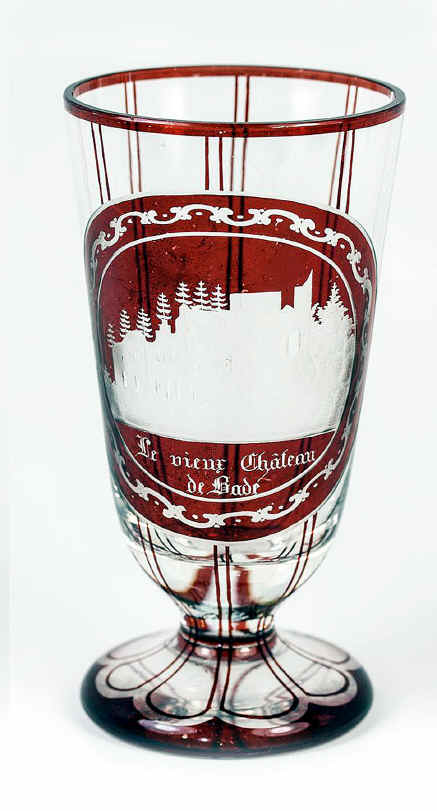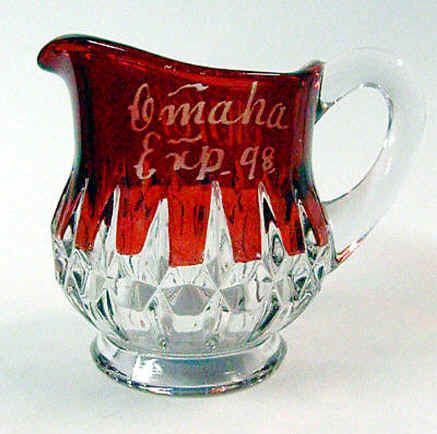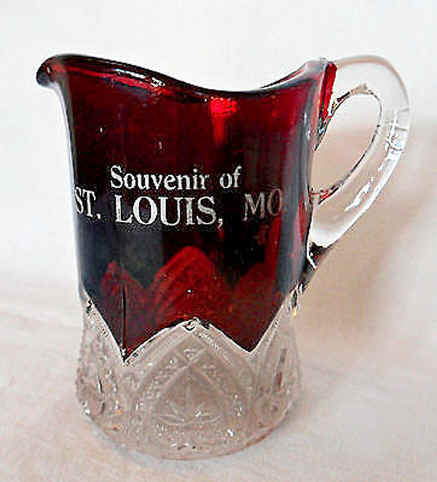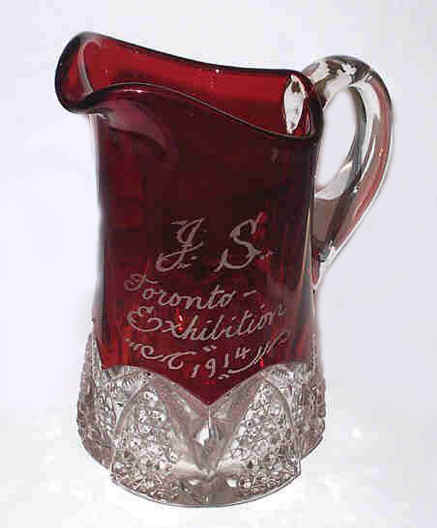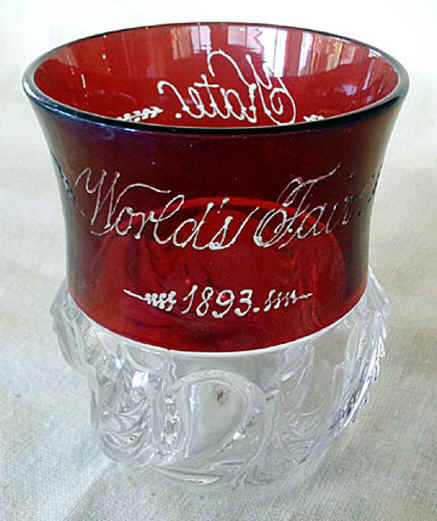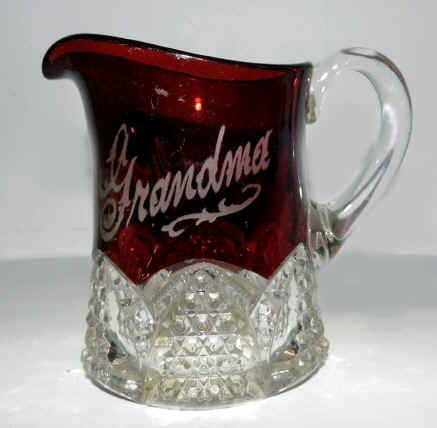|
GAY 90s RUBY-STAINED SOUVENIR GLASS OFFERED SOLID MEMORIES By Bob Brooke
Souvenir glass, sold at tourist attractions, fairs, and train stations, was beautiful and it was cheap. During the 1880s and even more so during the 1890s, happy and prosperous Victorians took to the road, train, and ship and traveled near and far in search of pleasure and enlightenment. As great collectors, they sought out souvenirs of their travels. One of the most popular of these were ruby-stained glass toothpick holders, tumblers, goblets, creamers and pitchers inscribed with their name or the name of the destination, and perhaps the date.
Produced in the United States from 1880 to 1920, there were eventually thousands of patterns that flooded the market. Makers produced many of the more popular patterns in a variety of forms. They combined different colors of glass and different decorating techniques to produce hundreds of thousands of pieces of glass. What makes souvenir glass so unique is that many pieces have a date and, often the name of the owner clearly inscribed. A series of events brought about the mass production of pressed glass in the U.S. These events came together about 1880 to create an explosion of what has come to be called pattern glass since each piece had a pattern on its surface created by taking a glob of molten glass and literally pressing the glass into a mold.
The glassmakers also figured out a way to make their pressed glass look like costly cased and cut glass. Prior to the 1880s, glassmakers made glass with two colors by dipping a hot piece of just-formed clear glass into a contrasting batch of colored glass, usually ruby. When the piece had cooled and annealed, a skilled craftsman cut a pattern through the thin colored layer to the clear glass beneath. Though more durable, it was a more expensive technique.
The way to create profits is to cut costs, so manufacturers, in an effort to offset rising labor costs, took shortcuts. Originally, ruby and amber-stained pieces had delicate incised patterns applied, but later makers ruby stained only the broad top section of a piece. By 1885, amber staining was available in the United States. Originating in Germany, the process used silver nitrate. Since many skilled glass workers immigrated from Germany and England, they brought their skills and knowledge with them.
Although glassmakers introduced a larger number of patterns during the 1890s, most were geometric and abstract designs, with a growing number made to emulate the flashy, expensive brilliance of cut glass, the de rigeur gift for weddings and important occasions.
Another popular ruby-stained pattern, Button Arches, introduced originally around 1898, continued in production for many years. The design consists of slightly overlapping pointed arches around the bottom edges and covers of pieces, each arch containing tightly packed "buttons." Made in clear, clear with ruby staining and gold-stained bands, collectors can find this pattern highlighted with souvenir inscriptions. Small pieces, such as the toothpick holder, apparently were favored giveaways or souvenirs from fairs, carnivals, and tourist spots. Ruby staining found its way into the Esther pattern, originally introduced as Esther Ware, which features a band of design around the bases of pieces. A curved row of small circles with starburst centers mixes with short ribs and a curved, fan-like device in the pattern band, leaving the upper portions of pieces plain and clear for ruby staining and inscribing.
In the late 1890s, the United States Glass Company, a consortium of smaller companies, came up with the idea of marketing a series of glass patterns named after the various states. Though a few of these patterns were new to the series, some were reissues of earlier lines reintroduced as part of this line. The state series continued through the turn-of-the-century. Most of the state patterns featured geometric or imitation cut-glass design, but a few had a plant and flower motif that adds to their appeal.
As an avid collector of a variety of antiques and collectibles for the last 20 years, Bob Brooke knows what he’s writing about. Besides writing about antiques, Brooke has also sold at flea markets and worked in an antique shop, so he knows the business side too. His articles have appeared in many antiques and consumer publications, including British Heritage, Antique Week, Southeastern Antiquing and Collecting Magazine, www.OldandSold.com, and many others. To read more of his work, visit his main website at www.bobbrooke.com or his specialty antiques site at www.theantiquesalmanac.com |
